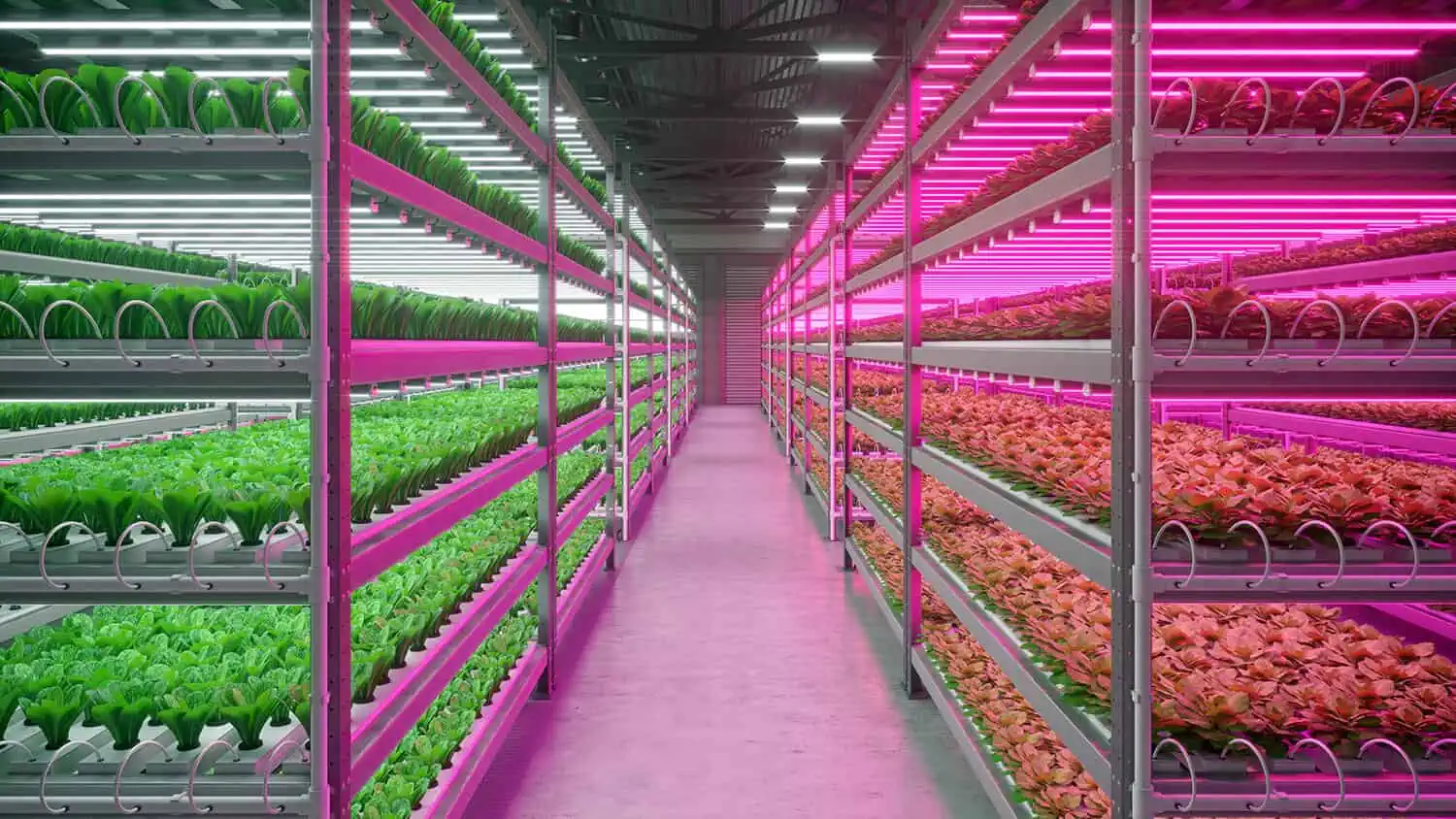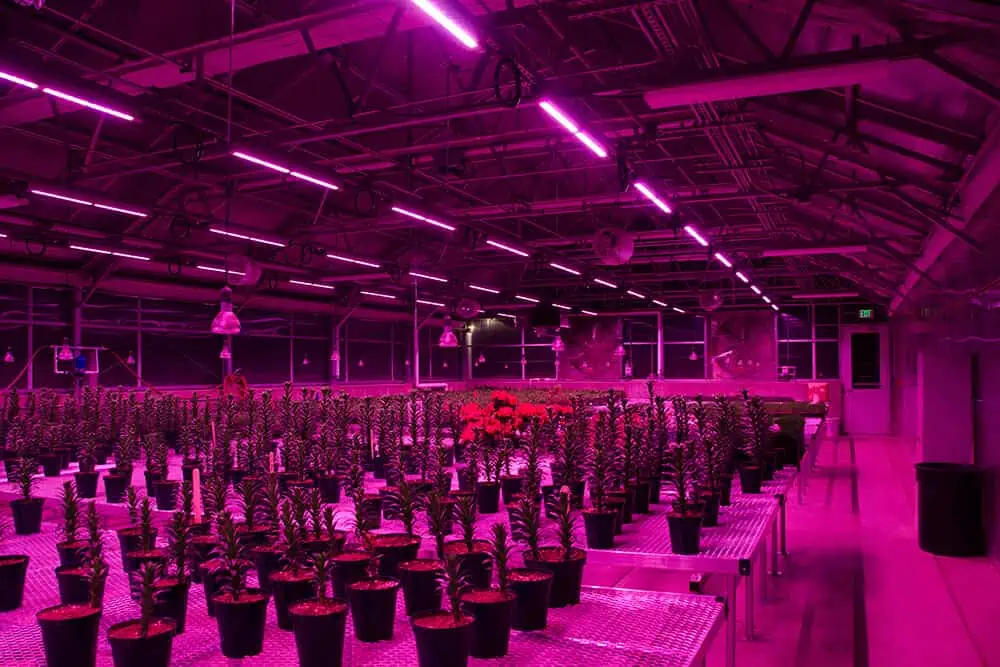What are LED grow lights?
LED grow lights are advanced lighting systems designed for indoor plant cultivation. They mimic natural sunlight and affect photosynthesis in plants. This way, these lights can provide the proper light your plants need to grow.
Typically, you can use them for industrial cultivation. However, plant propagation, horticulture, indoor gardening, household and food production are the main uses of LED grow lights. In addition to LEDs, you can also use high-intensity discharge (HID), incandescent, and fluorescent lamps for these applications. However, LED technology is best known for providing the highest photosynthetically active radiation (PAR). Therefore, you can install grow lights for many types of plant growth, with different spectrums, color temperatures, intensities, etc.
Unlike traditional lighting, LEDs emit very little heat and do not have a significant impact on the temperature of the culture system. Additionally, grow lights come in a variety of sizes and shapes, so you’ll want to choose the one that’s best for your specific application. Their long life and low energy consumption make them a cost-effective and environmentally friendly solution for all growers.
Hishine Group Limited is a high-power LED lighting manufacturer founded in 2010. Hishine is one of China LED grow light suppliers, Hishine has 3 type of LED grow lights, the PG01 grow light, PG02 grow light and PG03 grow light. all of those 3 types of grow lights are the full specture grow light. full specture grow light can provide all the bands of light needed for plant growth.
How do LED grow lights work?
LED grow lights produce specific wavelengths that aid in photosynthesis. It mimics sunlight, thereby promoting the absorption of oxygen and moisture by plants. This method starts from seeds, which require water from a hydroponic setup or irrigation system to thrive into vibrant plants. As the sun sets, many plants prepare for darkness by converting some of their nutrients into carbohydrates. They are then stored in the roots, or rhizosphere; this energy sustains them throughout the night. However, with LED grow lights, you don’t need to worry about this. LEDs offer an invisible light spectrum as a seamless alternative, providing growers with visibility and temperature control.

How do plants react to different colors of light?
You can use different light colors for other purposes. For example, if you want vegetable leaves to grow, you can use blue light. Additionally, the combination of red and blue light helps plants bloom. Therefore, you need to understand the many light colors to decide when to apply which color for indoor growing. The picture below allows you to understand how plants react to different light colors
| Light color | Wavelength | Effects on plants |
| Red spectrum | 600-700nm | Initiating the transition from vegetative to reproductive growth promotes the flowering process by stimulating the production of flowering hormones. Promotes fruit and flower development |
| Blue light spectrum | 400-500nm | Promote the production of chlorophyll Promote the growth and vegetative growth of roots, stems, and leaves Increase the amount of carbon dioxide reaching leaves Improve photosynthesis efficiency Plant growth should be oriented to light sources to control the growth cycle |
| Far red spectrum | 700-850nm | Extension of the stem leaves to expand and initiate flowering Affects seed germination Affects plant height and flowering time Increases fruit yield in short-day plants |
| Yellow light spectrum | 570-590nm | minimal photosynthesis |
| Orange spectrum | 590-620nm | Stimulate plant photosynthesis and influence plant movement |
| Green spectrum | 500-600nm | Helps penetrate deeper into the plant canopy It can reach the lower leaves of the plant to aid in photosynthesis. |
| Ultraviolet (UV) spectrum | UV-A(315-400nm) | Control various physiological functions and increase the synthesis of secondary metabolites |
| UV-B (280-315nm) | Has both positive and negative effects on plants. Effects on plant morphology by promoting synthesis of specific secondary metabolites Excessive UV-B can damage DNA. | |
| UV-C (100-280nm) | Causes serious damage to plant tissue and is not useful for botanical/horticultural purposes |
Grow lights can come in many types, and I’ve mentioned some of the most common ones here. Look at them
LED (Light Emitting Diode) grow lights
LED lights are the greatest and newest invention in indoor grow room lighting. These lights have become a favorite among consumers across the globe. They are energy efficient and generate less heat; these factors make them the best. However, although LEDs are more expensive than traditional grow lights, they can save money in the long run by reducing energy bills. Additionally, they allow you to choose the right light from a variety of color spectrums. Additionally, you can adjust the spectrum according to the growth stage of your plants. So, with the help of LEDs, you can enhance the health of your plants, thereby optimizing crop production. Not to mention these grow lights last longer than traditional grow lights.

MH (metal halide) grow lights
MH grow lights are not as energy efficient as LED lights. However, they are best suited for growing vegetable plants and offer a cool spectrum of blue-white color. Additionally, you can combine MH with HPS lamps for full spectrum results.
HPS (High Pressure Sodium) Grow Light
These types of grow lights are used during the fruiting and flowering stages of plant growth. Additionally, HPS grow lights offer a warm spectrum of orange-red color. Although they are less energy efficient compared to LEDs, they are used worldwide for their canopy penetration and high light output.
CMH (ceramic metal halide) plant grow light
CMH grow lights are the same as MH grow lights but use ceramic arc tubes for longer life. Additionally, they increased efficiency and created a more tunable light spectrum. Similar to other lights, they are less efficient than LED lights. However, CMH lamps are more energy efficient than traditional MH lamps.
Fluorescent grow lights
Fluorescent grow lights are best for clones, seedlings, and even low-light plants. However, they are not strong enough for bright light or for larger plants. There are various types of fluorescent grow lights, such as T8, T5 grow lights, and CFLs (Compact Fluorescent Lamps), which provide a balanced light spectrum for growth.
Author 2025-06-12
Hishine Group Limited Will Meet Customers In Mexico City.Hishine is thrilled to announce its participation in Expo Eléctrica International 2025, Latin America’s premier trade fair for power and lighti...
Author 2025-05-12
Our recent business trip to Saudi Arabia proved to be a pivotal step in strengthening partnerships and exploring opportunities in the Kingdom’s rapidly growing energy and lighting markets. Below are t...